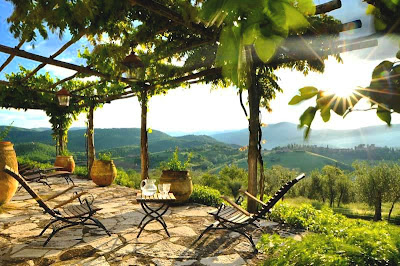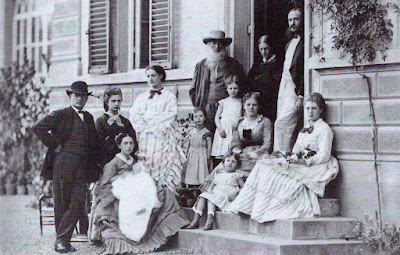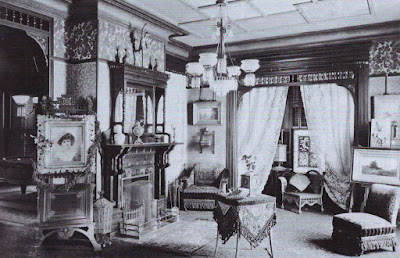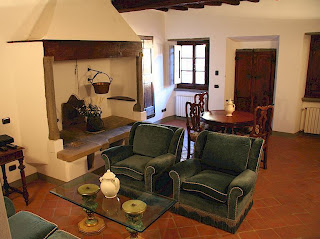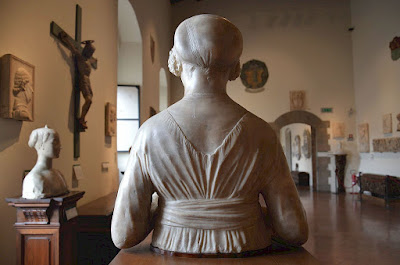Today, a few tips on
what you need to know before renting a car in Italy.
Firstly, many
car rental agencies in Italy leave much to be desired in terms of service, accessibility and opening hours, and some of them are to be avoided at all costs. Waits of up to two hours are not exceptional when picking up and dropping off a car at a popular point such as an airport. Closure for lunch, holidays and at night are standard practice. Be aware that some rental car companies that have a good reputation in the US, for example, are totally separate from companies of the same name in Italy.
Secondly,
don't try to save money by using price comparision websites and opting for the cheapest deal. You will surely lose money and a lot of time if you do. Use
Avis,
Hertz or
Europcar or a reputable broker such as
Auto Europe even if it appears to cost a bit more.
Europcar is probably the largest rental company in Italy and has a good reputation.
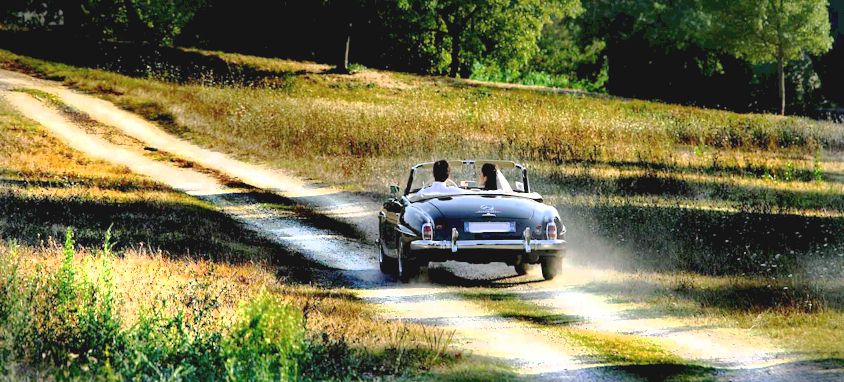 |
| Motoring in Tuscany |
Auto Europe is an agency that arranges cheap rentals with the major and reputable car rental companies. The UK site is sometimes cheaper than the US one, so check out both
www.autoeurope.com and
www.auto-europe.co.uk. AutoEurope has a good reputation.
DO NOT confuse
Auto Europe with
Auto Europa - Sicily by Car which has a very bad reputation.
Auto Europe good, Auto Europa bad.
Rental car agencies in Italy to be AVOIDED at all costs.
● Auto Europa - Sicily by Car has an appalling reputation for sullen service, hours long waits,
major overcharging, total lack of response to communications etc.
NEVER have anything to do with Auto Europa. All business for
Dollar and
Thrifty car rental companies in Italy is handled by Auto Europa -
therefore
AVOID.
Once again:
Auto Europe good, Auto Europa bad.
● Goldcar Rental Agency,
especially at Pisa Airport, is notorious for hard-selling additional and unnecessary insurance, including not mentioning that the charge is per day not per hire and stating falsely that your own insurance, if any, is invalid. They overcharge for the initial tank of petrol and refuse a refund on remaining petrol when the car is returned. There are also endless reports of other excess charges. Waits can be up to four hours. Their staff are uniformly reported to be rude, aggressive and intimidating.
Note that many brokers send customers to this rental car agency without fully explaining their fuel and insurance policy.
If a broker offers you a car from Goldcar, refuse it.
● Maggiore Car Rental is another company to be
absolutely AVOIDED, especially in Sicily. All the same issues as for Goldcar and more.
Maggiore Car Rental has by far the worst reputation of any large car rental company in Italy. They routinely come up with excess charges in the hundreds and will call in the police if you don't pay. Never threaten to dispute a card payment nor give them cash. Work through your card company after the event.
DO NOT, DO NOT, DO NOT RENT FROM MAGGIORE.
● Sixt Holiday Car Rentals is yet another rental car company that
should NEVER be used. If a broker sends you to this company, cancel immediately.
A Sixt speciality is to send you to a franchise that does not have an available car. Complaints to Sixt elicit the response that their small print says that reservations are NOT confirmed (despite their email titled "Confirmation of your reservation".)!
● Locauto should NEVER be used. If you are sent there through a broker, cancel immediately. They routinely demand a large deposit and then charge for existing damage, they do not check returned vehicles in the presence of the customer and they add damages to the blank check sheet, their insurance makes no provision for the passengers if the car breaks down and so on and on.
● Firefly is yet another disastrous hire car company that
should NEVER be used. Easycar and
Holiday Autos sometimes refer customers to Firefly. Cancel immediately if that happens. Dirty vehicles often with over 100,000 km on the dial, headlights that don't work etc etc. plus charges for an additional driver despite that being included, the usual massive (e.g. 1500 euros) deductions from credit cards without explanation, and so on.
To check carefully: unethical car rental companies pressure their customers to buy additional insurance. This not only costs money unnecessarily but
can render your original insurance invalid.
Always insist that you get a finalisation of your rental - that is a receipt that the car has been checked and that signed off as OK and that there is no balance due for car items (damage and petrol). This can take a lot of time but it's worth it. They will not sign off on possible future parking or other road infringements.
IMPORTANT -
limited traffic zones (ZTL's).
These are the areas in the historical centres of most Italian cities and towns that are closed during certain hours to traffic other than permit holders. Rental cars do not have these permits. The ZTL's are monitored by traffic cameras and entry by non-permit holders results in a charge to your credit card by the car rental company and a fine from the traffic authorities. Many rental car companies have offices very near these zones so that it's easy to wander into one when driving to or from the car pickup. For this reason, it is highly recommended, in Florence, for example, to use the offices and rental car pickup at the airport rather than those in the centre of town.
Full details about traffic violation in Italy, including ZTL infractions, click here.
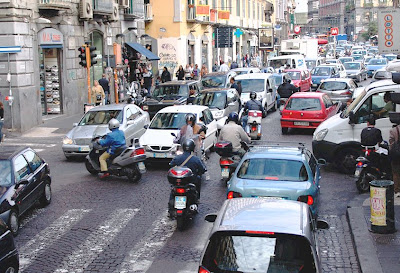 |
| Driving in Florence |
ALSO IMPORTANT - an
International Driving Permit, which is in essence an official translation of your driving licence, is required, in addition to a driver's licence, by everyone who does not hold a driving licence issued by an EU country and who intends to drive in Italy. Note that International Drivers Licences sold over the Internet are all scams, offering worthless pieces of paper at best. You need an International Driving Permit from your national motoring organisation. They're very cheap. Most rental car agencies now ask to see your International Driving Permit in addition to your licence.
If you plan to spend most of your time in a city such as Florence, with just one or two excursions into the countryside,
you might find that the additional cost of a car and driver-guide rather than a rental car will be far outweighed by convenience and the efficiency of having a planned sightseeing itinerary.
More about motoring in Tuscany.
More about getting around in Tuscany.
Chianti without a car, including a list of recommended drivers.
Author: Anna Maria Baldini




